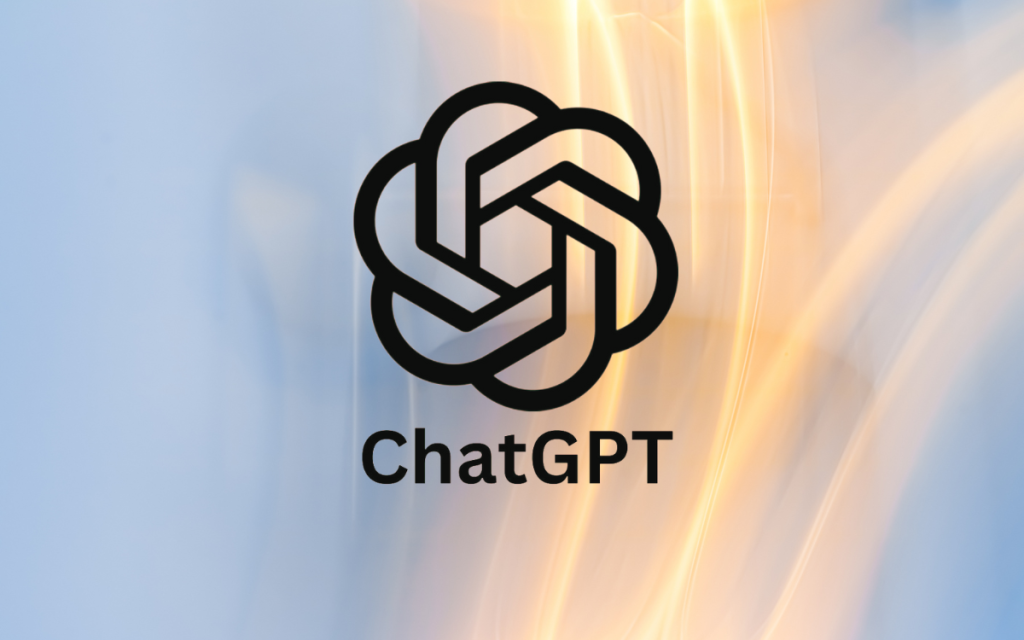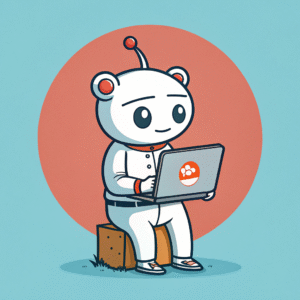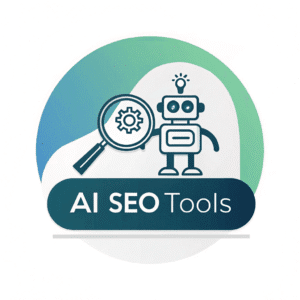In the ever-evolving landscape of artificial intelligence, one name has become synonymous with innovation, efficiency, and transformative potential: ChatGPT. Developed by OpenAI, this state-of-the-art language model has redefined how we interact with technology, automate tasks, and enhance productivity. Whether you’re a business owner, a developer, or simply someone curious about AI, understanding this tool and its capabilities is essential in today’s digital age.
In this comprehensive guide, we’ll explore everything you need to know about ChatGPT, from its origins and functionality to its real-world applications and future potential. By the end of this post, you’ll have a deep understanding of why this technology is a game-changer and how you can leverage it to your advantage.
What is ChatGPT?
ChatGPT is an advanced AI language model based on the GPT (Generative Pre-trained Transformer) architecture. It is designed to understand and generate human-like text based on the input it receives. Unlike traditional chatbots that rely on pre-programmed responses, this tool uses machine learning to analyze context, generate coherent replies, and even engage in complex conversations.
The “GPT” in its name stands for Generative Pre-trained Transformer, which refers to the model’s ability to generate text by predicting the next word in a sequence. This technology has been fine-tuned to excel in natural language processing (NLP), making it one of the most versatile AI tools available today.
How Does It Work?
At its core, this AI tool is powered by a neural network that has been trained on vast amounts of text data from the internet. This training allows the model to understand language patterns, grammar, and context. When you interact with it, the system processes your input, analyzes the context, and generates a response that is both relevant and coherent.
Here’s a simplified breakdown of how it works:
- Input Processing: When you type a question or prompt, the system breaks it down into smaller components to understand the meaning.
- Context Analysis: The model analyzes the context of the input to determine the most appropriate response.
- Response Generation: Using its training data, it generates a response that matches the input’s context and intent.
- Output Delivery: The generated text is displayed as the AI’s reply, ready for further interaction.
This process happens in milliseconds, making it an incredibly efficient tool for real-time communication.
The Evolution of This Technology
This AI tool is part of the GPT series, which has seen several iterations since its inception. Here’s a brief timeline of its evolution:
- GPT-1: The first version introduced the concept of using transformers for language tasks. While groundbreaking, it had limited capabilities compared to later versions.
- GPT-2: Released in 2019, GPT-2 was a significant leap forward. It could generate more coherent and contextually accurate text, but OpenAI initially withheld the full model due to concerns about misuse.
- GPT-3: Launched in 2020, GPT-3 is the most advanced version to date. With 175 billion parameters, it can perform a wide range of tasks, from writing essays to coding.
- ChatGPT: Built on GPT-3.5 and GPT-4, this tool is specifically optimized for conversational applications. It combines the power of GPT-3 with fine-tuning to deliver more accurate and human-like responses.
Each iteration has brought improvements in accuracy, versatility, and usability, making it a cornerstone of modern AI technology.
Key Features
This AI tool stands out for its unique features, which make it a valuable tool for individuals and businesses alike. Here are some of its most notable capabilities:
- Natural Language Understanding: It excels at understanding and generating human-like text, making it ideal for conversations, content creation, and more.
- Versatility: From answering questions to writing code, it can handle a wide range of tasks with ease.
- Context Awareness: Unlike simpler chatbots, it can maintain context over multiple interactions, allowing for more meaningful conversations.
- Customizability: Developers can fine-tune it for specific applications, making it adaptable to various industries and use cases.
- Scalability: Whether you’re interacting with it one-on-one or integrating it into a large-scale system, it can handle high volumes of requests efficiently.
Real-World Applications
The versatility of this tool makes it applicable across numerous industries. Here are some of the most impactful use cases:
1. Customer Support
It is revolutionizing customer service by providing instant, accurate responses to customer inquiries. Businesses can integrate it into their websites or apps to handle common questions, troubleshoot issues, and even process orders.
2. Content Creation
Writers, marketers, and content creators are using it to generate ideas, draft articles, and even write entire blog posts. Its ability to produce high-quality text quickly makes it an invaluable tool for content production.
3. Education
It is being used as a virtual tutor, helping students with homework, explaining complex concepts, and providing personalized learning experiences. It can also assist teachers in creating lesson plans and grading assignments.
4. Software Development
Developers are leveraging it to write code, debug programs, and even design software architectures. Its ability to understand programming languages and generate functional code snippets saves time and reduces errors.
5. Healthcare
In the healthcare industry, it is being used to provide medical information, assist with patient communication, and even support diagnostic processes. While it’s not a replacement for professional medical advice, it can help streamline administrative tasks.
6. E-commerce
Online retailers are using it to enhance the shopping experience. From personalized product recommendations to answering customer questions, it helps drive sales and improve customer satisfaction.
7. Entertainment
It is also making waves in the entertainment industry. It’s being used to write scripts, generate story ideas, and even create interactive gaming experiences.
Benefits of Using ChatGPT
The adoption of this technology offers numerous benefits, including:
- Increased Efficiency: Automating repetitive tasks frees up time for more strategic activities.
- Cost Savings: By reducing the need for human intervention, businesses can lower operational costs.
- Improved Customer Experience: Instant, accurate responses lead to higher customer satisfaction.
- Enhanced Creativity: It can inspire new ideas and approaches, boosting innovation.
- Accessibility: Its user-friendly interface makes advanced AI accessible to non-technical users.
Challenges and Limitations
While this tool is powerful, it’s not without its challenges. Some of the key limitations include:
- Accuracy: It can sometimes generate incorrect or misleading information, especially when dealing with complex or niche topics.
- Bias: The model may reflect biases present in its training data, leading to skewed or inappropriate responses.
- Context Limitations: While it is context-aware, it can still struggle with long or highly nuanced conversations.
- Ethical Concerns: The potential for misuse, such as generating fake news or malicious content, is a significant concern.
Addressing these challenges requires ongoing research, ethical guidelines, and user education.
How to Get Started
If you’re ready to explore the potential of this tool, here’s how to get started:
- Access the Platform: Visit OpenAI’s website to access it. You can use the free version or opt for a premium subscription for additional features.
- Experiment with Prompts: Start by asking simple questions or giving basic prompts to see how it responds. Gradually increase the complexity of your inputs.
- Integrate into Your Workflow: If you’re a developer, explore the API to integrate it into your applications. For businesses, consider how it can enhance customer interactions or streamline operations.
- Stay Updated: Follow OpenAI’s updates and community forums to stay informed about new features and best practices.
The Future of ChatGPT
The future of this tool is incredibly promising. As AI technology continues to advance, we can expect even more sophisticated versions with enhanced capabilities. Some potential developments include:
- Improved Accuracy: Future iterations may address current limitations, delivering even more accurate and reliable responses.
- Multimodal Capabilities: Integrating text with other forms of media, such as images and videos, could expand its applications.
- Personalization: It could become more tailored to individual users, offering personalized recommendations and interactions.
- Ethical AI: Ongoing efforts to reduce bias and ensure ethical use will make it a more trustworthy tool.
Conclusion
This AI tool is more than just a chatbot; it’s a transformative technology that is reshaping how we communicate, work, and innovate. Its ability to understand and generate human-like text has opened up countless possibilities across industries, from customer service to healthcare and beyond.
As we continue to explore its potential, it’s essential to approach its use with a balance of enthusiasm and caution. By understanding its capabilities, limitations, and ethical considerations, we can harness its power to create a more efficient, creative, and connected world.
Whether you’re a business leader looking to streamline operations, a developer seeking to build cutting-edge applications, or simply an AI enthusiast, this tool offers something for everyone. Embrace the future of AI and discover how it can revolutionize your world.
Frequently Asked Questions (FAQs) About ChatGPT
To further enhance your understanding of ChatGPT, we’ve compiled a list of frequently asked questions. These FAQs address common queries and provide detailed answers to help you make the most of this powerful AI tool.
1. What is ChatGPT, and how does it differ from other chatbots?
Answer: ChatGPT is an advanced AI language model developed by OpenAI, designed to generate human-like text based on user input. Unlike traditional chatbots that rely on pre-programmed responses, ChatGPT uses machine learning to understand context, analyze input, and generate coherent and relevant replies. This makes it more versatile, accurate, and capable of handling complex conversations.
2. How can I access ChatGPT?
Answer: You can access ChatGPT by visiting OpenAI’s official website. OpenAI offers both free and premium versions of ChatGPT. The free version provides basic functionality, while the premium version (ChatGPT Plus) offers additional features such as faster response times, priority access during peak hours, and early access to new updates.
3. Is ChatGPT free to use?
Answer: Yes, ChatGPT is available for free, but with some limitations. The free version may have slower response times during peak usage and limited access to advanced features. For enhanced performance and additional benefits, users can subscribe to ChatGPT Plus, which costs $20 per month.
4. What are the main applications of ChatGPT?
Answer: ChatGPT has a wide range of applications, including:
- Customer support (e.g., answering FAQs, troubleshooting issues)
- Content creation (e.g., writing blogs, generating ideas)
- Education (e.g., tutoring, creating lesson plans)
- Software development (e.g., writing code, debugging)
- Healthcare (e.g., providing medical information, assisting with patient communication)
- E-commerce (e.g., personalized product recommendations)
- Entertainment (e.g., scriptwriting, gaming).
5. Can ChatGPT write code?
Answer: Yes, ChatGPT can write code in various programming languages, including Python, JavaScript, HTML, and more. It can generate code snippets, debug existing code, and even explain programming concepts. However, it’s important to review and test the code generated by ChatGPT, as it may occasionally contain errors.
Final Thoughts
ChatGPT is a groundbreaking AI tool that has transformed the way we interact with technology. Its ability to understand and generate human-like text has opened up countless possibilities across industries, from customer service to content creation and beyond. By addressing common questions and concerns, this FAQ section aims to provide a comprehensive understanding of ChatGPT and its potential.
Whether you’re a business owner, developer, or AI enthusiast, ChatGPT offers a wealth of opportunities to enhance productivity, creativity, and innovation. As we continue to explore its capabilities, it’s essential to approach its use with a balance of enthusiasm and responsibility. Embrace the future of AI with ChatGPT and discover how it can revolutionize your world.



